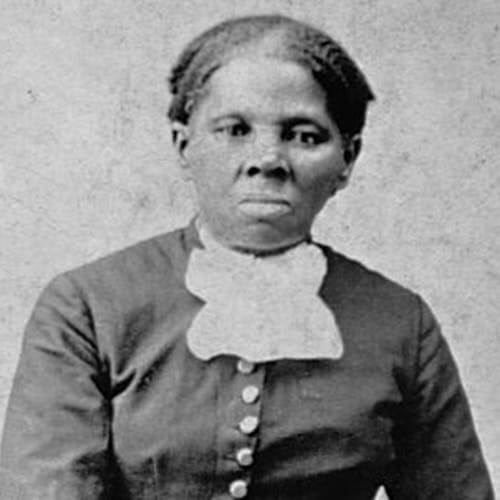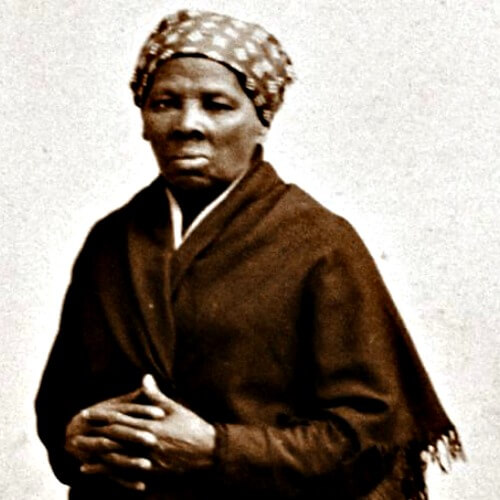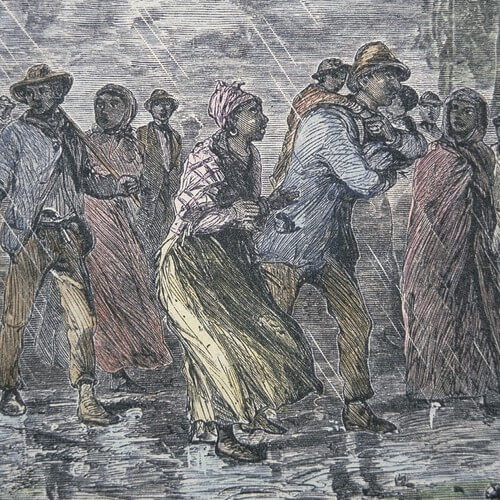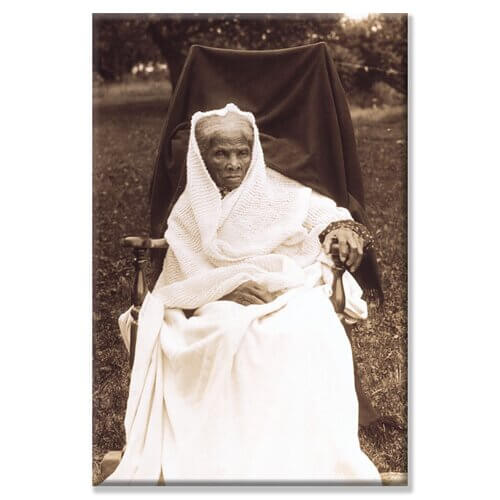Famous People of the Civil War
Learning about the lives of some famous Civil War era individualsHarriet Tubman
Harriet Tubman escaped slavery to become a leading abolitionist. She led hundreds of enslaved people to freedom along the route of the Underground Railroad. During the Civil War, Tubman acted as a spy for the Union Army. After the Civil War ended, Tubman dedicated her life to helping former slaves and the elderly.
Early Life
Harriet Tubman was born Araminta Harriet Ross sometime between 1820 and 1825 in Dorchester County, Maryland to Ben Ross and Harriet Green. As with other slaves, Tubman’s life was difficult. Her siblings were sold to other plantations and she suffered physical abuse including being lashed. On one occasion when Tubman refused to help capture a fugitive slave, an overseer threw a weight that struck Harriet in the head. This injury would result in Tubman enduring seizures, severe headaches, and narcoleptic episodes for the rest of her life.
In 1844, Harriet married a free black man named John Tubman. At the time around half of the African American people on the eastern shore of Maryland were free and it was not unusual for a family to include both free and enslaved people. It was also around this time that she changed her name from Araminta to Harriet.
Escaping Slavery
Tubman first used the Underground Railroad in 1849 when she attempted to escape slavery with two of her brothers in Maryland in an attempt to reach Philadelphia. After learning about a $300 reward for Harriet, her brothers decided to return to the plantation while she continued on to Philadelphia. Tubman traveled nearly 90 miles to Philadelphia. She crossed into the free state of Pennsylvania with a feeling of relief and recalled later, “When I found I had crossed that line, I looked at my hands to see if I was the same person. There was such a glory over everything; the sun came like gold through the trees, and over the fields, and I felt like I was in Heaven.”
The Underground Railroad
From that point on, Tubman made it her life’s mission to use the Underground Railroad to free her family and other slaves. Her first trip happened in December 1850 when she helped her niece Kessiah and her family to safely travel to Philadelphia. With the passage of the Fugitive Slave Act on September 18, 1850, escaped slaves, such as Tubman, could be captured in the North and returned to slavery. In response to the law, Tubman decided to use the Underground Railroad to take slaves to Canada, which prohibited slavery. In December 1851, Tubman guided a group of 11 fugitives northward.
In April 1858, Tubman met abolitionist John Brown. Brown advocated the use of violence to disrupt and destroy the institution of slavery and Tubman shared Brown’s ideas. As part of his planning for an attack on Harper’s Ferry, Brown asked Tubman for help recruiting former slaves. Tubman remained active during the Civil War. Working for the Union Army as a cook and nurse, Tubman quickly became an armed scout and spy. The first woman to lead an armed expedition in the war, she guided the Combahee River Raid, which liberated more than 700 slaves in South Carolina.
Later Life
In early 1859, abolitionist Senator William H. Seward sold Tubman a small piece of land near Auburn, New York that became a home for Tubman’s family and friends. Tubman lived there and supported her family and other former slaves. Tubman was never able to make a lot of money and she continued to help support others.
Tubman died of pneumonia on March 10, 1913, surrounded by friends and family, at around the age of 93. As Tubman aged, the head injuries sustained early in her life became more painful and disruptive. She underwent brain surgery at Boston’s Massachusetts General Hospital to alleviate the pains and “buzzing” she experienced regularly. Tubman was eventually admitted into the rest home named in her honor. She was buried with military honors at Fort Hill Cemetery in Auburn.
Fast Facts
Fast Fact # 1
In honor of her life and by popular demand, in 2016, the U.S. Treasury Department announced that Tubman will replace Andrew Jackson on the center of a new $20 bill.
Fast Fact #2
Originally named Araminta Harriet Ross, Tubman was nicknamed “Minty” by her parents. Araminta changed her name to Harriet around the time of her marriage, possibly to honor her
Fast Fact #3
In 1869, Tubman married a Civil War veteran named Nelson Davis. In 1874, the couple adopted a baby girl named Gertie.
Fast Fact #2
Between 1850 and 1860, Tubman made 19 trips from the South to the North following the Underground Railroad. She guided more than 300 people, including her parents and several siblings, from slavery to freedom, earning the nickname “Moses” for her leadership.
Learn More
Videos
Vocabulary
Abolitionist: a person who favors the abolition of a practice or institution, especially capital punishment or (formerly) slavery.




